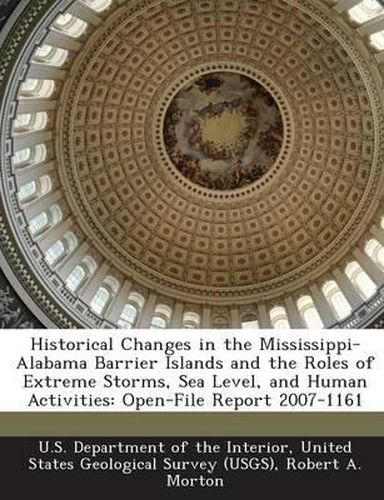Historical Changes in the Mississippi-Alabama Barrier Islands and the Roles of Extreme Storms, Sea Level, and Human Activities
Robert A Morton

Historical Changes in the Mississippi-Alabama Barrier Islands and the Roles of Extreme Storms, Sea Level, and Human Activities
Robert A Morton
An historical analysis of images and documents shows that the Mississippi-Alabama (MS-AL) barrier islands are undergoing rapid land loss and translocation. The barrier island chain formed and grew at a time when there was a surplus of sand in the alongshore sediment transport system, a condition that no longer prevails. The islands, except Cat, display alternating wide and narrow segments. Wide segments generally were products of low rates of inlet migration and spit elongation that resulted in well-defined ridges and swales formed by wave refraction along the inlet margins. In contrast, rapid rates of inlet migration and spit elongation under conditions of surplus sand produced low, narrow, straight barrier segments. Since the mid 1800s, average rates of land loss for all the MS islands accelerated systematically while maintaining consistency from island to island. In contrast, Dauphin Island, off the Alabama coast, gained land during the early 20th century and then began to lose land at rates comparable to those of the MS barriers. There is an inverse relationship between island size and percentage of land reduction for each barrier such that Horn Island lost 24% and Ship Island lost 64% of its area since the mid 1800s. Ship Island is particularly vulnerable to storm-driven land losses because topographic and bathymetric boundary conditions focus wave energy onto the island. The three predominant morphodynamic processes associated with land loss are: (1) unequal lateral transfer of sand related to greater updrift erosion compared to downdrift deposition, (2) barrier narrowing resulting from simultaneous erosion of the Gulf and Soundside shores, and (3) barrier segmentation related to storm breaching. The western three fourths of Dauphin Island are migrating landward as a result of storms that erode the Gulf shore, overwash the island, and deposit sand in Mississippi Sound. Petit Bois, Horn, and Ship Islands have migrated westward as a result of predominan
This item is not currently in-stock. It can be ordered online and is expected to ship in approx 2 weeks
Our stock data is updated periodically, and availability may change throughout the day for in-demand items. Please call the relevant shop for the most current stock information. Prices are subject to change without notice.
Sign in or become a Readings Member to add this title to a wishlist.


